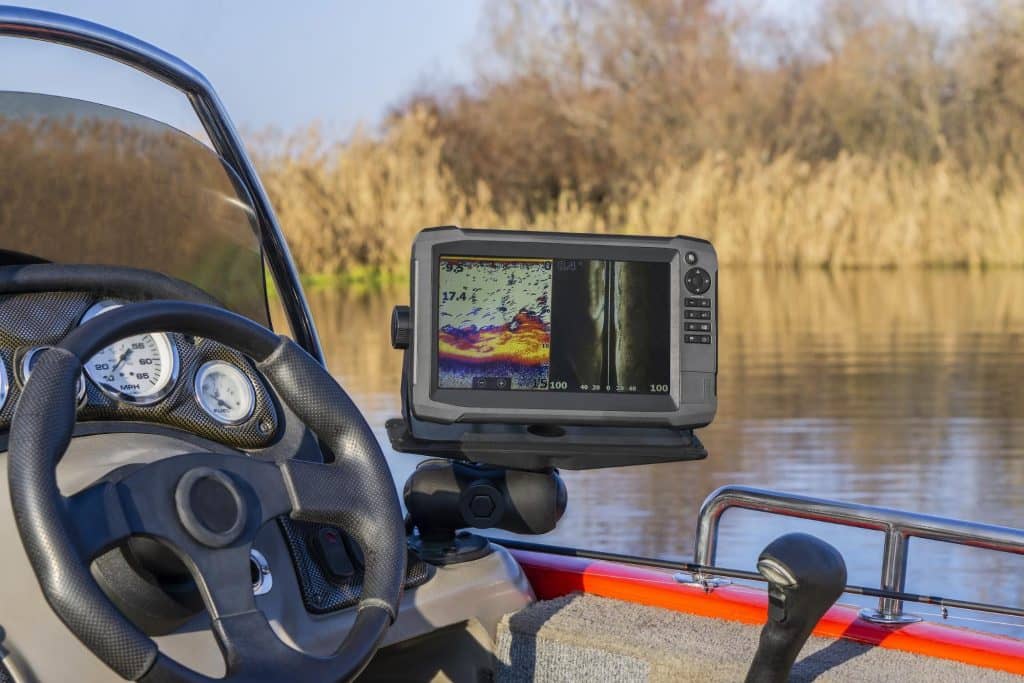You could become confused by all the technical jargon if you want to purchase your first fish finder. A first-time user could feel overwhelmed by all the many features and functionalities. It’s challenging to make understand of anything because there are so many different transducer kinds, flashers, echoes, sonars, and other things.
To make the procedure simpler for all, we went ahead and put together the fish finder instructions. We’ll introduce you to certain concepts and debunk some myths. When you eventually decide to buy a fish finder, you’ll be able to do so knowing that you’re making the appropriate choice.
A fish finder is a fishing companion that can see underneath your boat and inform your buddy anglers of any potential fish. It’s almost like having an additional crew member. It is a great partner and a crucial tool for many different forms of fishing.
Type of Fish Finder
CONSOLE FISH FINDER – Keep an eye on the screen from the driver’s seat with in-dash or gimbal mounting options.
BOW FISH FINDER – If the front of your boat is where the fishing happens, we’ve got mounting options to keep the underwater world in clear view.
PORTABLE FISH FINDER – From boats, to kayaks, to the ice, fishing options are wide open with a portable fish finder.
Key Things to Look For in a Fish finder
Power – The watts of a fish finder serve as a measure of its power. It establishes the power of the acoustic pressure that your device will emit. The power of a fish finder can be as low as 100 watts for tiny gadgets and as high as 1000 watts for sophisticated deep-sea systems.
For rough seas or inland lakes, you can use as less as 200 or 300 watts to view the bottom and the fish. You will have more than enough power with 600-watt fish finders for near-shore- shore fishing.
On a 50 Hz frequency, you can increase 400 feet of depth for every 100 watts.
For every 100 watts of power used at a 200 Hz frequency, you gain an extra 100 feet of depth.
Transducers and Frequency – Your fish finder’s frequency setting will have an impact on the object’s depth and level of detail. The transducer is the component of the fish finder system that transmits and receives sound waves. You can select transducers that transmit Single, Dual, or multiple frequencies at once based on your demands.
Once released into the water, these waves reflect off various objects. They are then detected by the transducer after that. Data is inserted into the central unit after it is received. Such signals are processed there and turned into a visible, understandable image on the display.
Various mount styles are available for transducers. The transom mount is the most straightforward to install. However, you can choose another type, such as the thru-hull mount, if you have a larger boat or require something more important.
Transducer Material –
You must choose the appropriate transducer material based on the sort of boat you’ll be operating. A plastic transom mount will work just fine for avid and recreational fishers. They work with nearly all types of kayaks.
Fiberglass or metal hulls require plastic housings if you’re utilizing a transducer with a thru-hull or an in-hull attachment. Stainless steel housings are required for aluminum or steel hulls. Boats with wood or fiberglass hulls can use bronze housings.
Display – Not just fish finders but all gadgets now come with displays. Unlike black and white screens, which only have 265 shades of grey, these can display up to a million colors and a great deal of information.
Your transducer’s output will be easier to view and comprehend with a color screen. You can see what’s happening more clearly with more colors. In addition, it is harder to read black-and-white displays in bright sunlight. Black and white screens once again fall short with poor readability in low light or overcast conditions.
You should also think about the screen resolution and pixel count of your fish finder. A pixel is a single dot that appears on a screen. The display may produce more detail the more pixels you have. With a 320 × 320 resolution, each column has 320 dots running top to bottom and 320 dots running left to right. You should aim for at least 240 x 160 pixels. But even with this resolution, you might feel like you are playing Tetris instead of finding fish.
Side Imaging – You can see anything that moves along your boat’s sides thanks to side imaging. This is particularly helpful in shallow seas where fish might not always be hiding beneath you.
Chart plotter – Chart plotters are a common feature of contemporary fish finders. Its main purpose is to assist you in navigating and avoiding reefs and other underwater dangers that can harm your boat.




